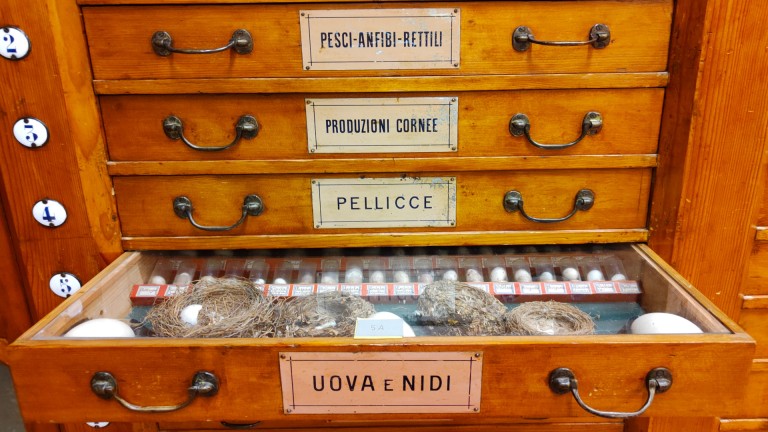The History of the Museum

In 1884, within the framework of the national and European pedagogical and didactic renewal, the Society of Teachers of Bologna commissioned Luigi Bombicci to create a collection dedicated to schools, designed for positivistic teaching, based on the observation of natural objects, organized in a cataloged system.
Luigi Bombicci (Siena 1833 - Bologna 1903), called in 1860 by the University of Bologna as professor of Mineralogy, dedicated himself with commitment and passion to the creation of the museum, also designing and having three cabinets built, each composed of 30 drawers, in in which numerous specimens relating to the three Kingdoms of Nature are collected, in a scientific but informative manner, concerning the human needs of dressing, eating and living.
The cabinets are accompanied by a catalog of the objects, which also includes general information and suggestions on the educational use of the objects themselves: the idea is in fact to make the museum circulating in the city, available to schools through a system of transport and loans similar to that of circulating libraries.
The accompanying cabinets and display cases (cabinet of concretions1 and cabinet of preparations and models) constitute the main nucleus of the museum collection which, after various vicissitudes, found a stable location in the Manzolini schools, soon joined by materials from other schools or donated by parents, teachers and in particular the director Roberto Vignoli, who was responsible for the rediscovery and valorisation of the museum itself, also through the establishment of the teaching room, managed since 1984 by municipal teachers, with a wide training offer aimed at schools every order and degree.
Since 2008 the Museum has been located in some rooms of the restored former convent of San Mattia and is composed as follows:
- the circulating educational museum by Luigi Bombicci;
- the reconstruction of a school environment between the nineteenth and twentieth centuries, with a teacher's desk, blackboard, two desks and other furnishings and teaching materials;
- a rich collection of materials and documents of various origins, linked to the world of school, collected and donated mainly by Roberto Vignoli.
The Museum, in its new location, also has a large classroom equipped to accommodate a class of 25 students and a multipurpose room equipped for projections, conferences, etc. (capacity 50 seats).

Foto di Stefania Vellani


